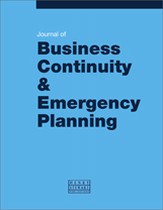Snow: Building a better all-hazards response
Abstract
Emergency managers are usually operating from one end of the disaster spectrum to the other. The spectrum starts at the low end with preparedness, training and exercises, going through minor incident responses, and then out to the far end, where major crisis response is required. The art of striking the right balance between routine priorities on one end, as well as training the emergency operations centre staff for a catastrophic incident on the opposite end, has always been a challenge. Exercises, testing and training move organisations to an operationally acceptable level, but getting beyond that point is difficult due to the infrequency of major disasters within a jurisdiction. The goal of this paper is to offer insight in order to identify and leverage non-traditional opportunities in preparing for the next catastrophic incident. This paper will use as an example snow clearing and removal operations to demonstrate the challenges and long-term opportunities in better preparing emergency management organisations for responding to a major crisis. On conclusion, the reader will be more aware of potential opportunities that can be leveraged to build a more prepared response organisation and staff. The opportunity to conduct response operations in a low-threat, well-planned, generally slow-building incident like snow removal is an opportunity to hone skills in preparation for a catastrophic incident that most emergency managers spend a lifetime preparing for.
The full article is available to subscribers to the journal.
Citation
Gaynor, Peter T. (2013, May 1). Snow: Building a better all-hazards response. In the Journal of Business Continuity & Emergency Planning, Volume 6, Issue 4. https://doi.org/10.69554/YGNM7361.Publications LLP
